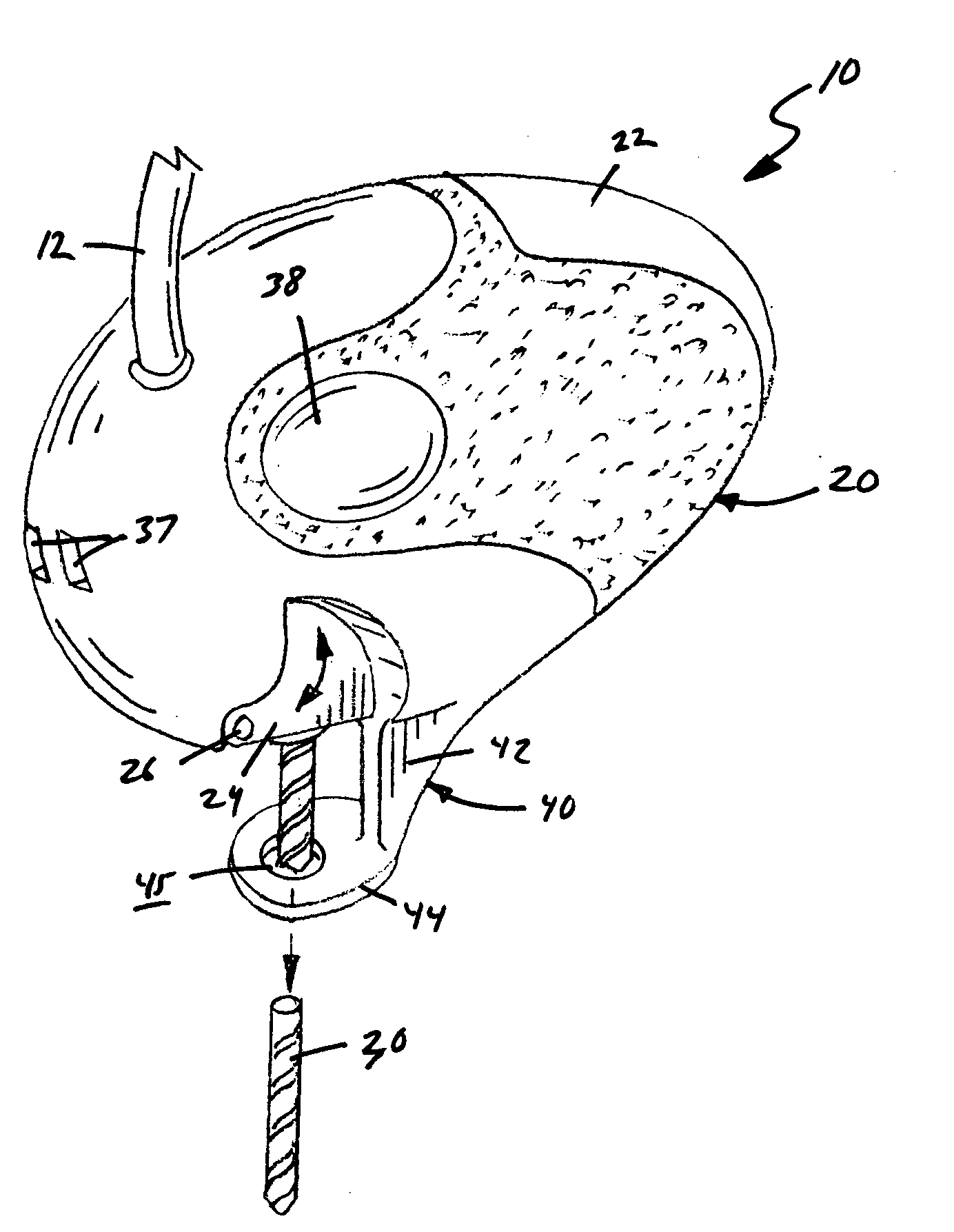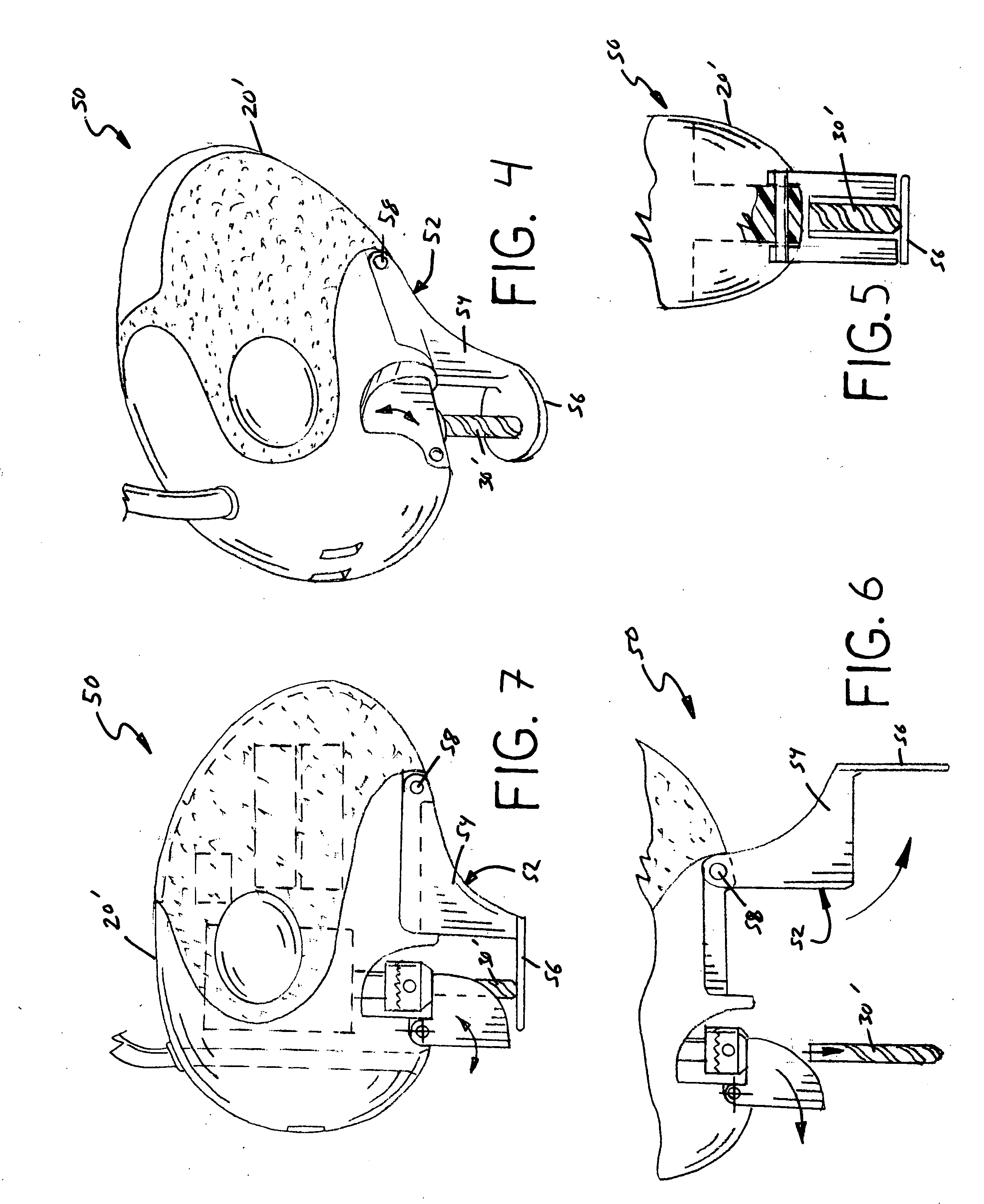Cast saw
- Summary
- Abstract
- Description
- Claims
- Application Information
AI Technical Summary
Benefits of technology
Problems solved by technology
Method used
Image
Examples
Embodiment Construction
[0022]The embodiments herein described are not intended to be exhaustive or to limit the invention to the precise form disclosed. They are chosen and described to explain the invention so that others skilled in the art might utilize its teachings.
[0023]FIGS. 1-3, 12-14 illustrate a first cast saw embodiment of this invention, which is designated generally as reference numeral 10. As shown, saw 10 includes an egg shaped saw body and a spiral cut blade 30, which is also known as a rotary cut blade. Saw body 20 is configured in an ergonomic egg shape so that the saw body can be comfortably grasped and controlled during the cutting operation. As shown, saw body 20 has rounded front and aft ends. The sides of saw body 20 are also textured to provide a positive grip for the operator. A blade shield 24 is pivotally mounted to saw body 20. Blade shield 24 covers spiral cut blade 30 when not in use and pivots upward against the saw body 20 as cast saw 10 moves over and cuts a cast 4. Blade s...
PUM
 Login to View More
Login to View More Abstract
Description
Claims
Application Information
 Login to View More
Login to View More - R&D
- Intellectual Property
- Life Sciences
- Materials
- Tech Scout
- Unparalleled Data Quality
- Higher Quality Content
- 60% Fewer Hallucinations
Browse by: Latest US Patents, China's latest patents, Technical Efficacy Thesaurus, Application Domain, Technology Topic, Popular Technical Reports.
© 2025 PatSnap. All rights reserved.Legal|Privacy policy|Modern Slavery Act Transparency Statement|Sitemap|About US| Contact US: help@patsnap.com



